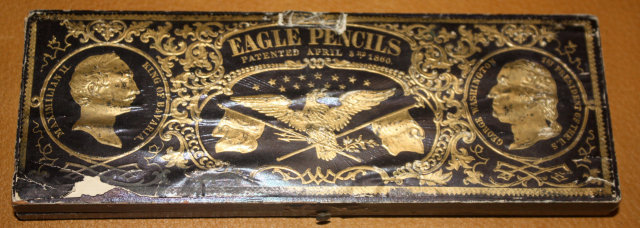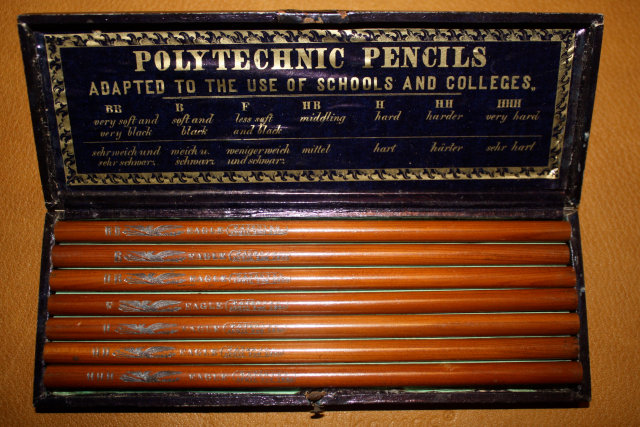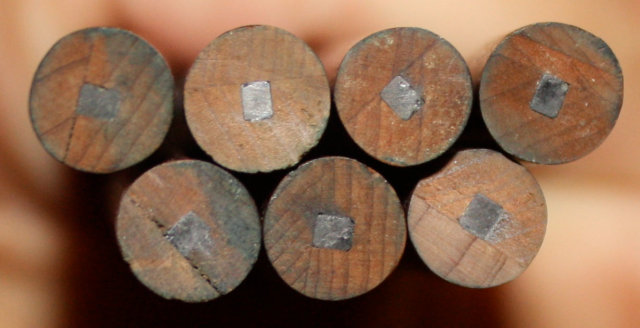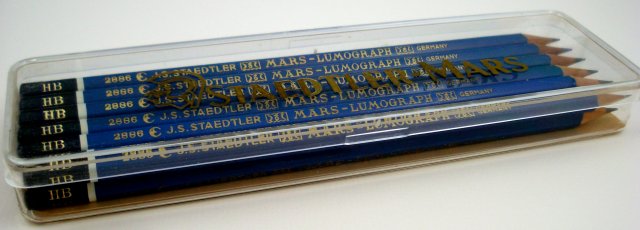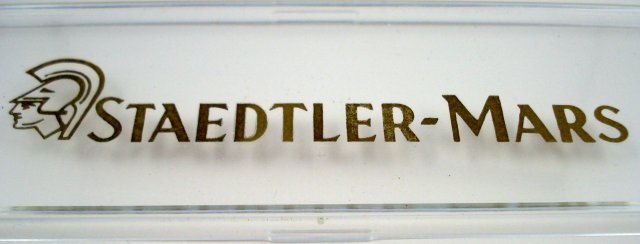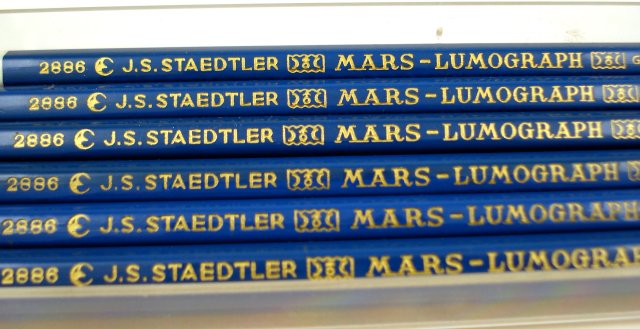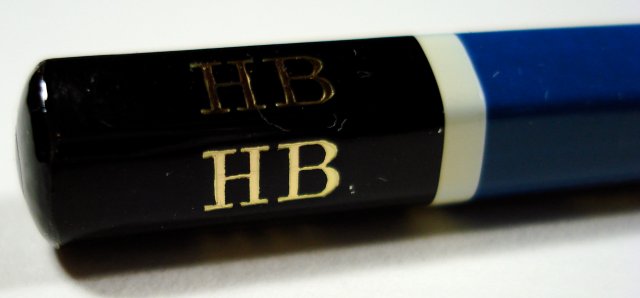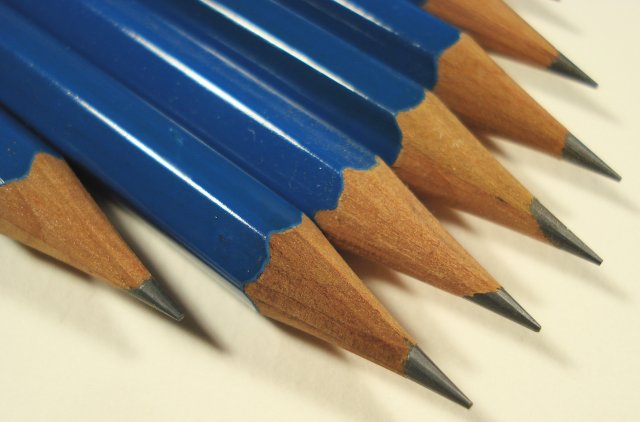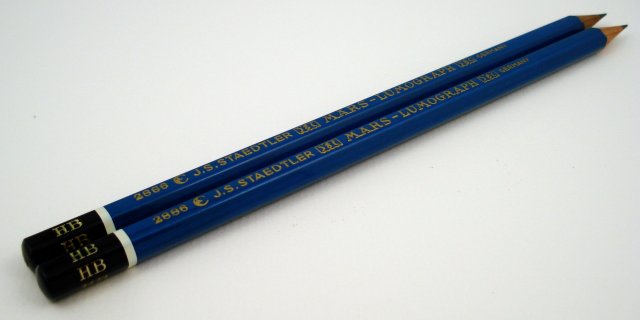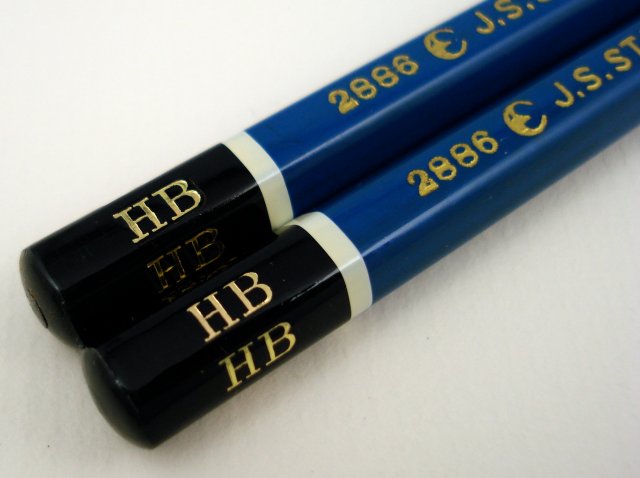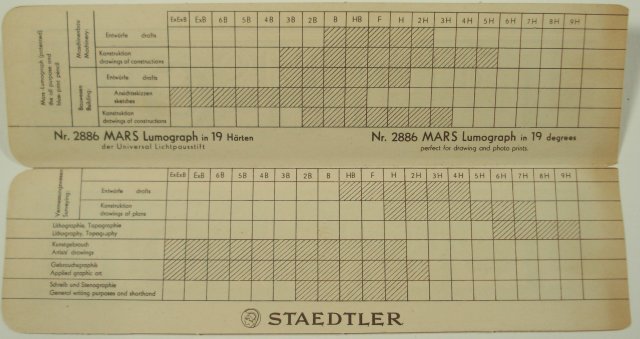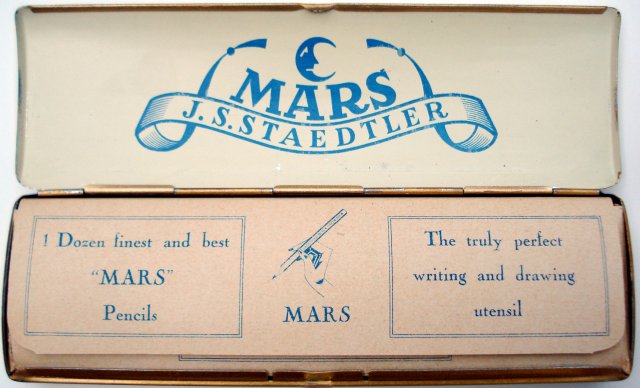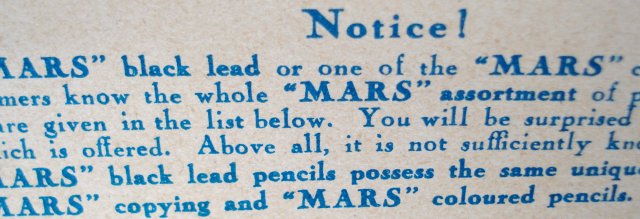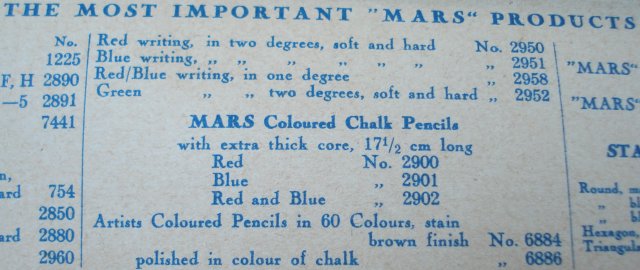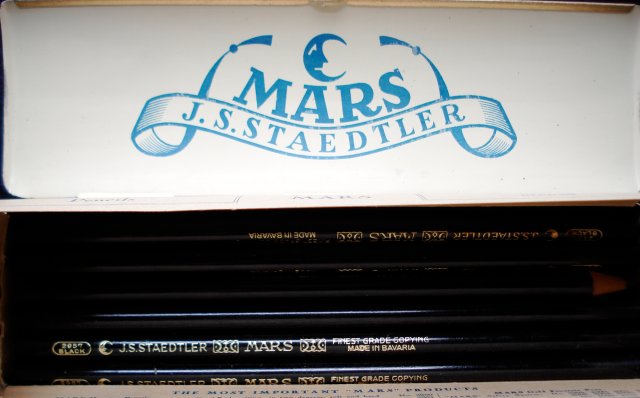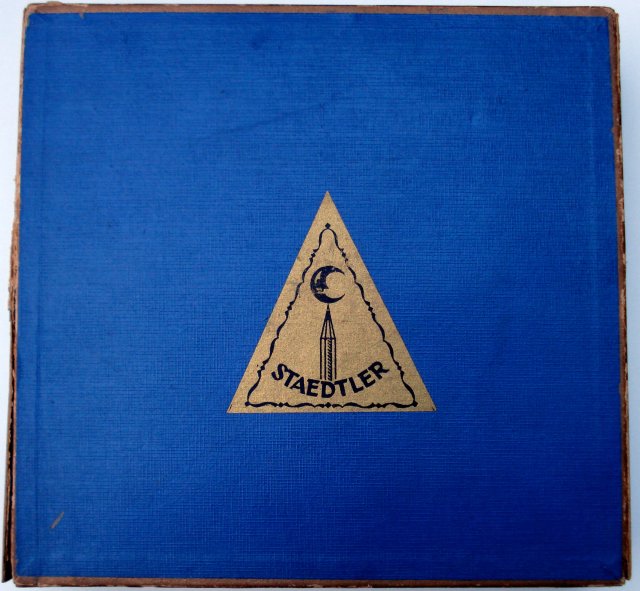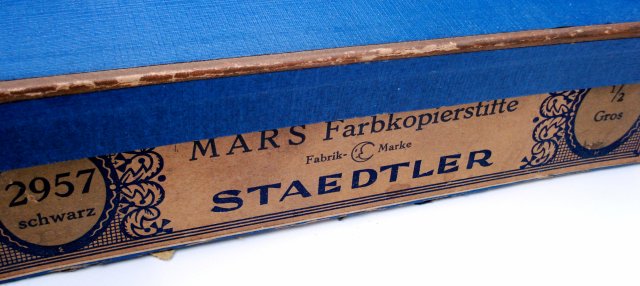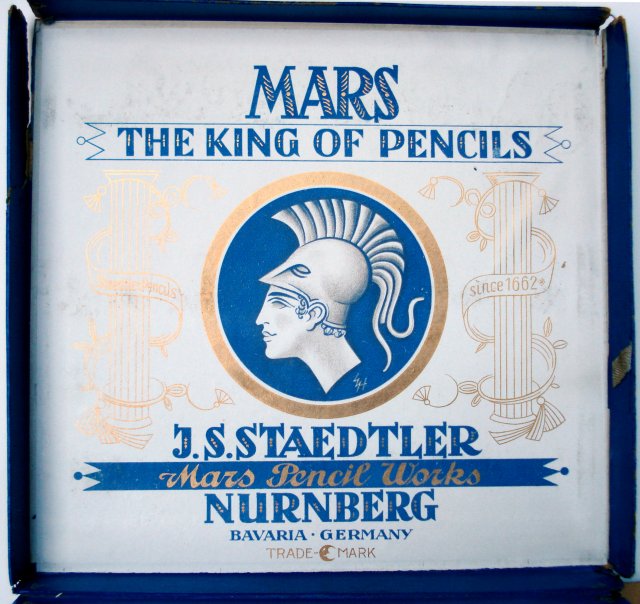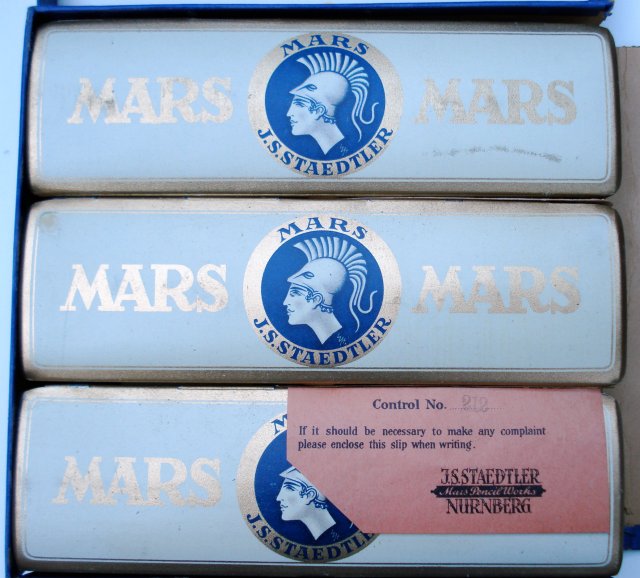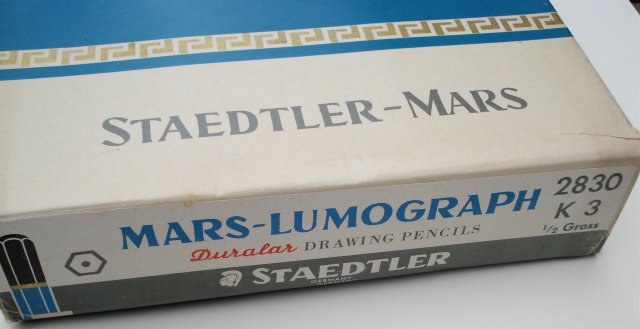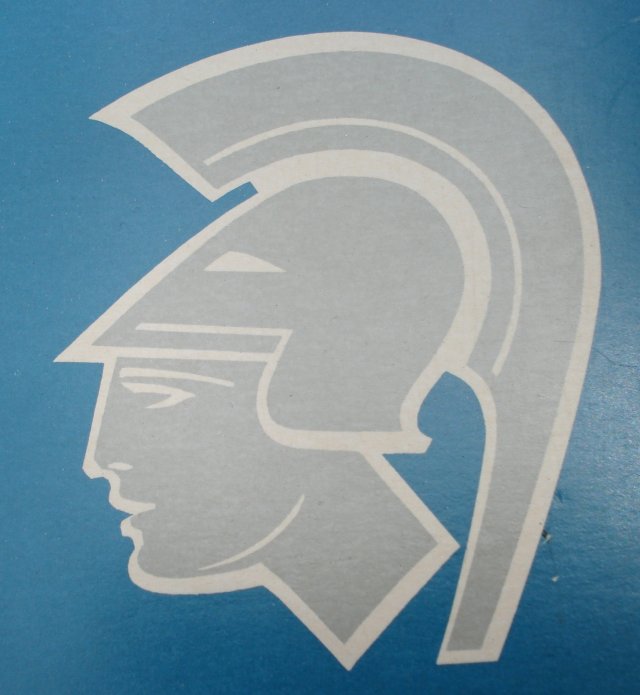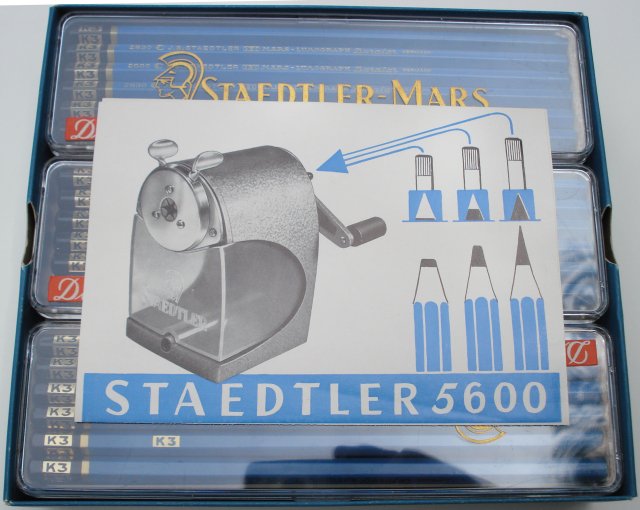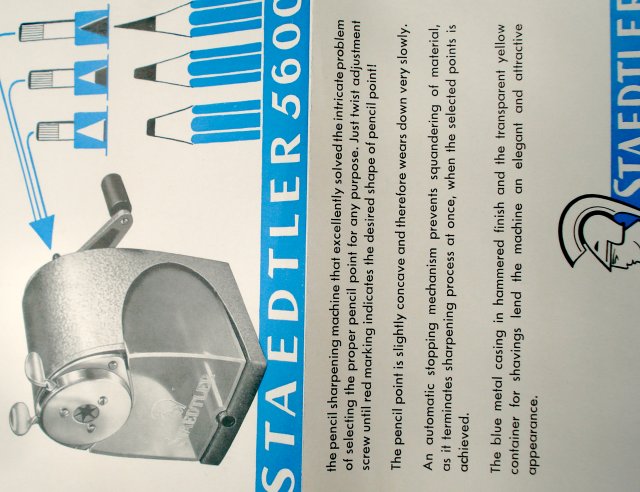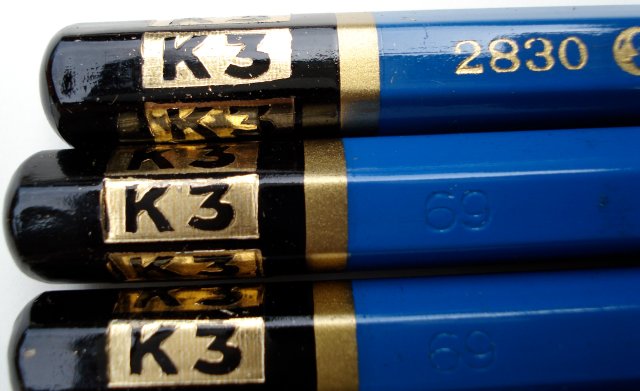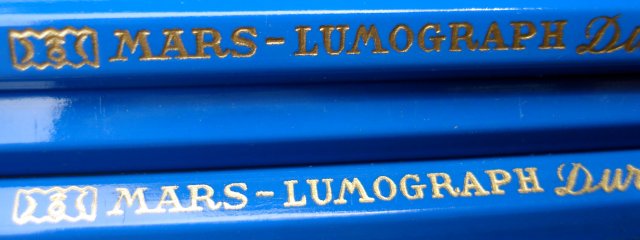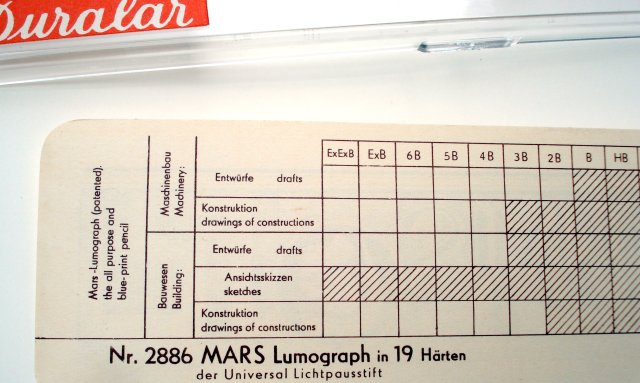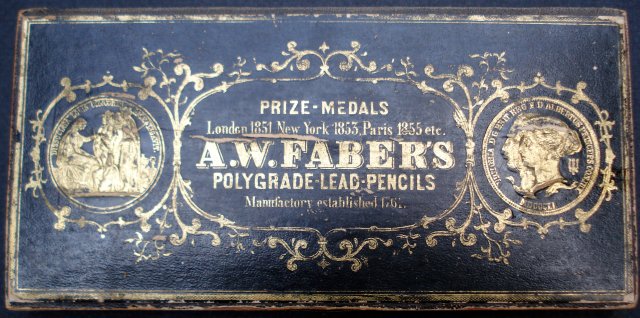
Lothar von Faber’s Polygrade is a historically important pencil. Launched in 1837, and sold until the early 20th century, the product offered pencils in a system of standard grades, and established the Faber name globally. The pencils were also the first by Faber to use the Conté/Hardmuth process of blending graphite with clay, an improvement over the use of raw graphite.
The particular box we see here is rather ornate, and reflects the price and status of the Polygrade pencils in the 19th century. 1851, 1853, and 1855 prizes are mentioned on the box. The pencils within are additionally stamped “E. Faber 133 William St. NY”. Eberhard Faber is known to have departed that address in 1877, so the pencils can probably be dated from 1855 to 1877, placing them closer to Faber’s 1761 establishment than the present. (2011 is Faber-Castell’s 250th anniversary.)
A metal push button mechanism to open the box is still functioning:
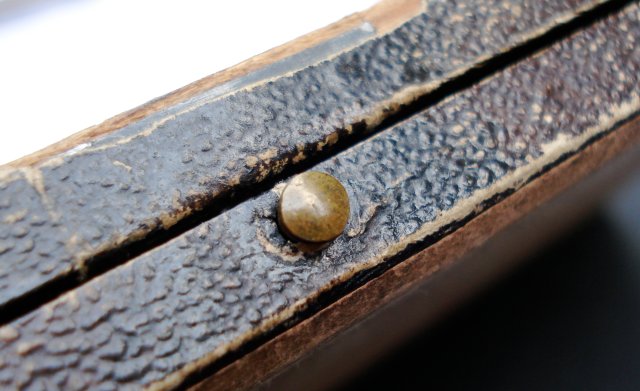
Eight of the original set of ten remain. All are a bit worse for wear. The imprints of the softer grades are the best preserved.
The inside cover mentions, in French and English, the pencil grades:
BBBB and BBB: very soft and very black
BB: soft and very black
B: soft and black
F: less soft and black
HB: middling
H: hard
HH: harder
HHH and HHHH: very hard
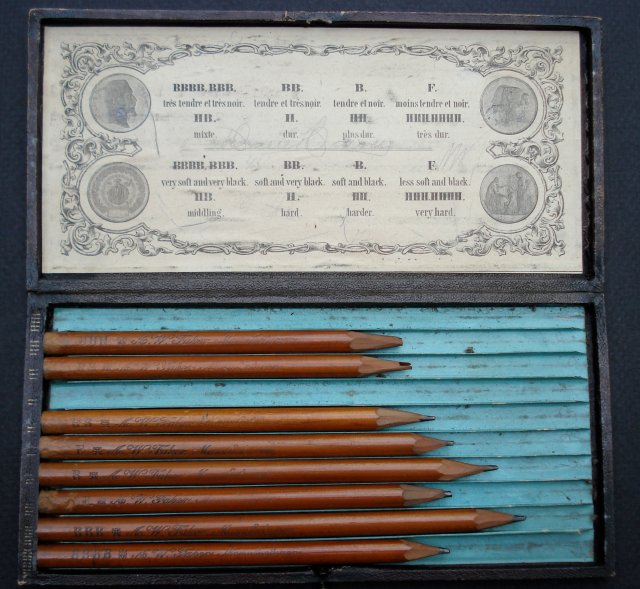
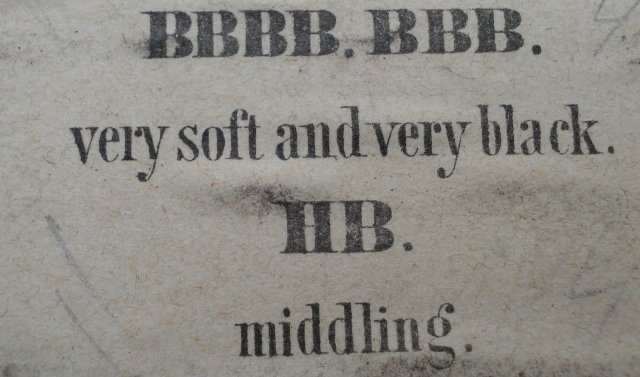
We would call these 3B and 4B today:
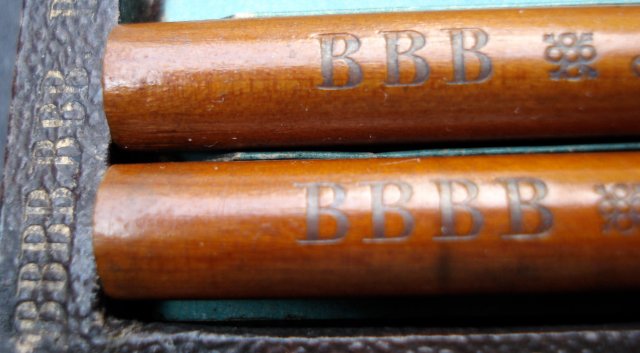
Though quite faded, the imprints are beautiful:
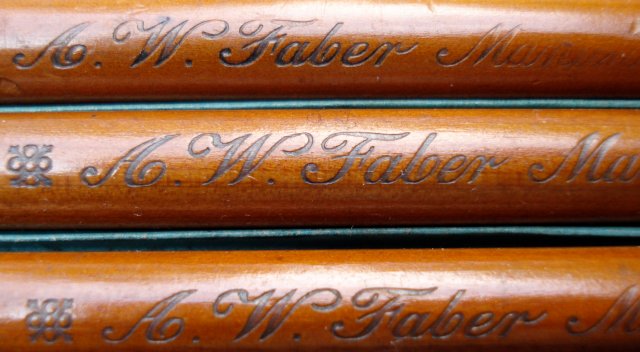
The patina of the wood is certainly no less attractive due to the age.
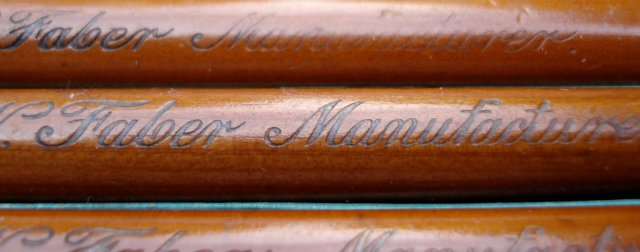
The previous owner performed some nice hand sharpening:
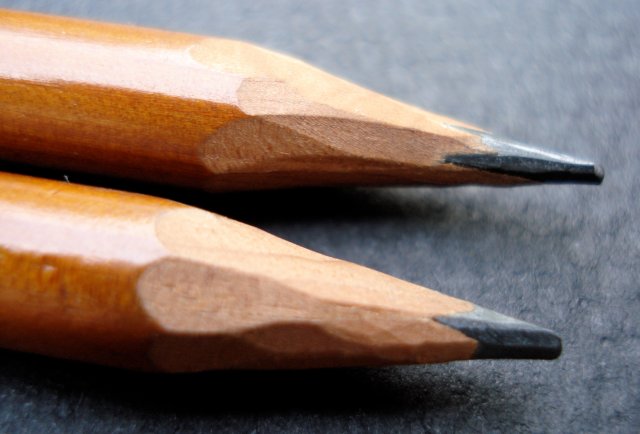
What is perhaps most interesting is the other end of the pencil: these pencils have rectangular leads, and use the historic construction method of placing the square lead in a square cavity, then gluing on the remaining third of the pencil. This was the technique used prior to the use of sandwich slats.
Note as well that the leads vary in size – just like modern quality pencil sets, the cores of the softer grades are larger.
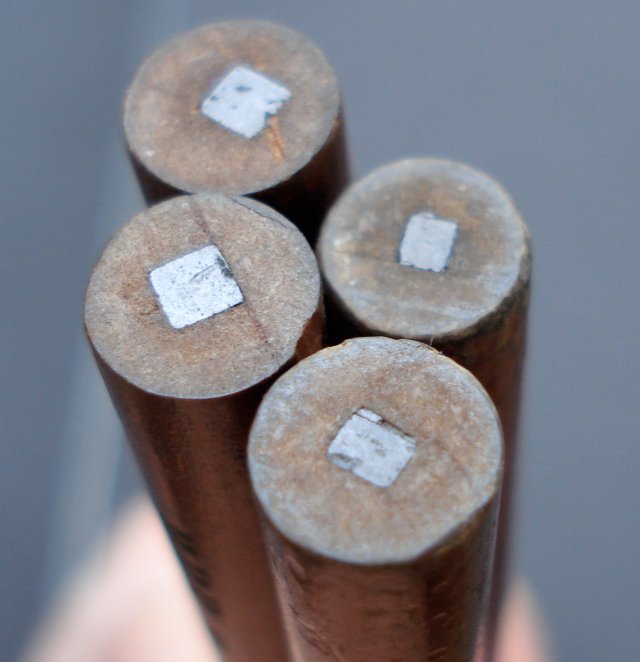
Do they still write? Of course they still write! On a toothy paper meant for charcoal or pastel:
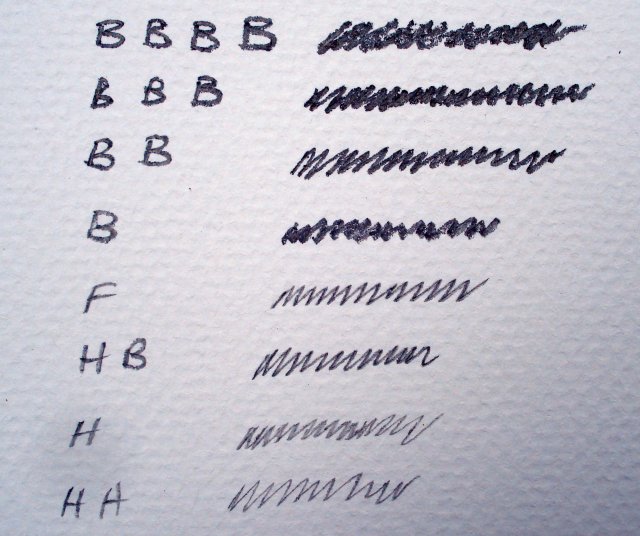
And the HB on a good quality writing tablet:

Well over a century after their manufacture, these pencils continue to impress.
Further reading and references:
The Pencil, A History of Design and Circumstance by Henry Petroski, has many references to this pencil. Two chapters in particular are relevant. Chapter 6, “Does One Find or Make a Better Pencil?”, discusses the history of pencil construction, and Chapter 11, “From Cottage Industry to Bleistiftindustrie”, focuses on the establishment of the pencil industry, driven by the Faber family and products such as the Polygrade.
Eberhard Faber’s Pencil Factory by Mary Habstritt at Archive of Industy. (PDF format.) A nice three page summary of the history of Eberhard Faber business.
Eberhard Faber Pencil Company Historic District Designation Report at City of New York. (PDF format.) Though officially about a municipal zoning matter, the report has an excellent history of the Eberhard Faber company, and is illustrated with maps and many photos of the historic Eberhard Faber buildings.
